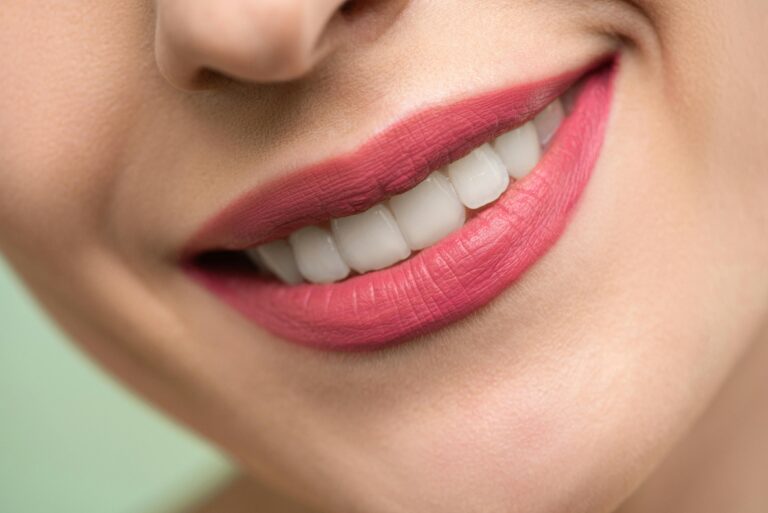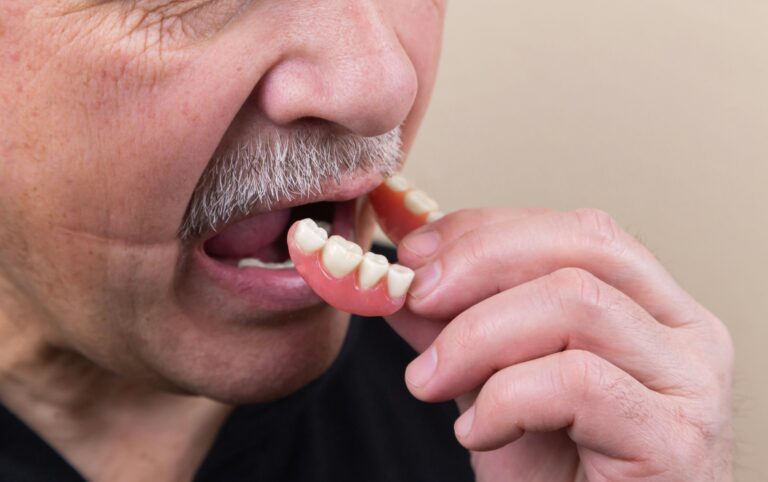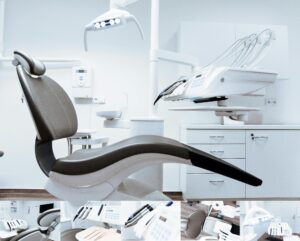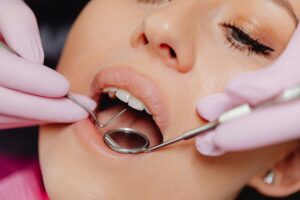Visiting the dentist is a crucial part of maintaining oral health. Yet, many people wonder, “How long are dentist appointments?”
The answer isn’t always straightforward. The length of a dentist appointment can vary greatly depending on several factors.
For instance, a routine check and clean session typically lasts between 30 to 60 minutes. However, first-time visits or appointments involving complex procedures may take longer.
Understanding the typical duration of dental visits can help you plan your schedule. It can also alleviate any anxiety related to the unknown aspects of dentist appointments.
In this comprehensive guide, we’ll delve into the factors that influence the length of dentist appointments. We’ll also provide tips on how to prepare for your visit to ensure it runs smoothly.
So, whether you’re scheduling your first dentist appointment or just curious about the process, read on to set clear expectations for your next dental visit.
Understanding the Duration of Dentist Appointments
The duration of a dentist appointment can vary from patient to patient. Typically, a routine dental check-up lasts about 30 to 60 minutes. This timeframe is sufficient for a thorough examination and cleaning.
However, first-time appointments often take longer. During these visits, dentists need to gather comprehensive dental histories. This process can extend the appointment to around 60 to 90 minutes.
The condition of your oral health also plays a role in the time required. Patients with minimal dental issues often have shorter visits. Conversely, those needing more extensive care or additional procedures may experience longer appointments.
Moreover, specialised treatments such as fillings or extractions require more time. These can significantly extend the duration compared to a regular check-up. Emergency situations are even more unpredictable, as their length depends on the complexity of the issue being addressed.
Understanding these factors helps set realistic expectations for your visit. It encourages efficient scheduling and reduces surprise around how much time you’ll spend at the dentist’s office.
What Happens During a Routine Dental Check-Up?
A routine dental check-up involves several key steps to ensure oral health. Each step is crucial in identifying potential issues early.
First, you’ll undergo an initial assessment by the dental hygienist or dentist. This includes looking for signs of decay or gum disease. X-rays might be taken if necessary to get a comprehensive view of your oral health.
After the assessment, the cleaning process begins. The hygienist will remove plaque and tartar, especially in hard-to-reach areas. This step is vital in preventing cavities and gum disease.
Once the cleaning is done, your teeth will be polished. Polishing smooths the surface of your teeth. This makes it harder for plaque to accumulate.
After polishing, flossing is performed to clean between your teeth. This ensures thorough removal of any debris left during cleaning.
To summarise, a typical dental check-up might include:
- Initial examination and X-rays
- Plaque and tartar removal
- Teeth polishing
- Flossing
- Oral hygiene advice and reminders
Throughout the check-up, patient education is a priority. The dental team will provide tips on maintaining good oral hygiene at home. They might also discuss any areas of concern observed during the check-up.
If necessary, your dentist will discuss treatment options for any identified problems. This could involve scheduling follow-up appointments or providing advice on preventive care.
Finally, your next check-up will be scheduled. Regular visits are essential for maintaining optimal oral health. Routine check-ups help catch potential issues before they escalate.
Initial Paperwork and Preparation
Before the appointment, you’ll often need to complete some paperwork. This includes updating your medical history and insurance information. Arriving early helps to streamline the process.
This paperwork is essential for the dental team. It provides them with crucial context about your health. Knowing your history helps them tailor their approach effectively.
Preparation also involves gathering relevant medical information. Bring a list of medications you’re currently taking. Be ready to discuss any oral health concerns you have.
The Check and Clean Process
The check and clean process ensures your mouth is in top condition. This critical part of the dental visit maintains both aesthetics and health.
Examination and Assessment
During the examination, the dentist checks for cavities and other issues. X-rays may be needed for a complete picture. This thorough approach helps prevent future problems.
The dentist also examines your gums. Healthy gums are essential for overall oral health. They check for signs of gingivitis or other gum diseases.
The assessment may include oral cancer screening. Early detection is crucial for effective treatment. This proactive step provides peace of mind.
Cleaning and Preventive Measures
The cleaning process involves removing plaque and tartar. Dental hygienists use special tools for this task. This step helps prevent cavities and gum disease.
After cleaning, teeth polishing follows. A special paste is used to polish your teeth. It smooths the surfaces, making it harder for plaque to accumulate.
Finally, flossing ensures complete cleanliness between teeth. This process removes any remaining debris. It’s a critical component of comprehensive dental care.
Factors That Influence Appointment Length
The duration of a dentist appointment can vary widely. It often depends on several key factors. Understanding these factors helps prepare for your visit.
One critical factor is your oral health status. Patients with good oral hygiene generally have shorter appointments. Those with dental issues might need more detailed examinations.
The type of appointment you schedule will also affect the length. Routine check-ups are usually quick. However, procedures like fillings or extractions take more time.
New technologies in dental practice can influence appointment duration. Advanced tools may reduce the time needed for certain procedures. Conversely, additional safety protocols, like those introduced during COVID-19, can lengthen visits.
Patient cooperation plays a significant role, too. Kids or anxious patients might need extra time for calming and reassurance. This ensures a smoother process overall.
Understanding the scope of your appointment is essential. For instance, first-time visits typically take longer. These include comprehensive health histories and initial examinations.
Here’s a list of factors influencing appointment time:
- Type of appointment or procedure
- Oral health status and history
- Use of advanced technologies
- Patient cooperation and comfort level
- Safety protocols and regulatory requirements
Ultimately, communication with your dental office is key. Discuss your needs and concerns beforehand to ensure optimal scheduling. This proactive approach can make your visit more efficient.
First-Time Visits vs. Routine Appointments
A first-time dentist appointment often lasts longer than a routine visit. This is because the dental team needs a detailed health history. Initial exams are more comprehensive to establish a baseline.
Routine appointments are typically shorter. Patients already known to the dentist often skip the extensive paperwork. Their oral health status is also well-documented.
Regardless of the type, punctuality is important. Arriving on time ensures your full scheduled duration is used effectively. This leads to a smoother, more predictable appointment experience.
Dental Procedures Beyond the Basic Check-Up
Some dental procedures extend the length of your visit. Procedures like fillings require anaesthetic application and precise work. These might take an hour or more.
Root canals and extractions are complex. They need significant time for preparation and recovery discussions. Expect these to take longer than standard cleanings.
Cosmetic services, such as teeth whitening, also extend appointment length. These require additional steps to achieve desired results. These processes are meticulous yet rewarding.
For procedures beyond the routine check-up, scheduling considerations are vital. Discuss the expected duration with your dentist beforehand. This helps manage your time and expectations.
Some practices offer sedation options for anxious patients. While this can increase time in the chair, it enhances comfort. This ensures necessary dental care is received effectively.
Paediatric Dentist Appointments: What to Expect
Paediatric dentist appointments are typically shorter than those for adults. They usually last between 15 and 30 minutes. This is due to the different needs and attention spans of children.
Dentists make these visits as engaging as possible. The goal is to establish a positive association with dental care. This often includes a fun, educational approach.
During the appointment, emphasis is placed on education. Dentists teach children about oral hygiene in a playful manner. This helps children form good habits early in life.
How to Prepare for Your Dentist Appointment
Proper preparation can ensure a smooth dentist appointment. It helps in minimising any anxiety as well. Being organised allows you to maximise the benefit of your visit.
Here are some steps to help you get ready for your dental check-up:
- Confirm your appointment time and date.
- Gather your dental insurance information.
- List any oral health concerns or questions.
- Avoid heavy meals and sugary drinks before the visit.
- Bring any prescribed dental appliances, like retainers.
By following these tips, you enhance your experience. Having a plan in place reduces stress. You’ll be ready for any discussions or treatments needed.
Finally, prioritise the information you need to convey to the dentist. Communication is key for a successful outcome. It can help tailor the visit to meet your needs.
Before the Appointment
Start by confirming the details of your dentist appointment. Check the time and date, and make sure you can attend. Double-check any reminders you may have received.
Organise essential documents ahead of time. Gather your dental insurance card and any medical records. This helps streamline the process when you arrive.
List any specific concerns you wish to discuss. Noting questions about your oral health is a good idea. This ensures you address everything during the check-up.
On the Day of the Appointment
Aim to arrive a bit early for your dentist appointment. Arriving early allows for unforeseen delays. It also gives time for any necessary paperwork.
Wear comfortable clothing to your appointment. You want to feel relaxed during dental procedures. Avoid wearing heavy make-up or jewellery.
Lastly, maintain good oral hygiene before heading out. Brush and floss to ensure your mouth is clean. This helps the dentist conduct a thorough evaluation.
Managing Time and Anxiety for Dental Visits
Efficiently managing your time can significantly impact your dental visit experience. Begin by choosing a less busy time for your appointment. Early morning slots often work well for this purpose.
Punctuality is crucial in ensuring your appointment runs smoothly. Arriving on time helps in maximising the dentist’s allotted time for you. It also minimises the waiting period and potential stress.
Being prepared mentally and physically can alleviate anxiety. Practice deep breathing exercises before your appointment. This technique eases tension and promotes relaxation.
Consider discussing your fears with your dentist. Many dentists offer options like sedation to keep you calm. Open communication can lead to accommodations suited for your needs.
Finally, remember the long-term benefits of dental visits. Regular check-ups help prevent more significant issues. This realisation can motivate you to stay committed.
Tips for Efficient Appointments
To enhance appointment efficiency, stay organised. Have all necessary documents ready beforehand. This includes insurance details and medical histories.
Plan to visit the dental office during off-peak hours. Earlier in the day or midweek appointments are often less busy. This choice may cut down on waiting time.
Communication is vital during your visit. Clearly convey any concerns or symptoms to your dentist. This ensures the focus is on your priorities.
Dealing with Dental Anxiety
Dental anxiety is common but manageable. Start by acknowledging your feelings. It helps to be proactive in seeking solutions.
Discuss your anxiety with your dentist beforehand. Understanding your concerns allows them to tailor the experience. Techniques like sedation or breaks might be offered.
Try relaxation methods like meditation or music. Listening to soothing tunes during the appointment can distract your mind. Visualisation exercises, imagining calm places, can also provide comfort.
The Future of Dental Appointments: Trends and Innovations
The landscape of dental care is rapidly evolving. Technological advancements are at the forefront, transforming patient experiences. Innovations such as digital X-rays and 3D printing are revolutionising treatments.
Teledentistry is emerging as a significant trend. It provides a convenient way to manage appointments virtually. This approach reduces the need for in-person visits for consultations.
Artificial intelligence is also making its mark. AI tools help in diagnosing and planning treatments. This technology increases precision and streamlines procedures.
Patient-centric care is becoming a priority. Practices are focusing on personalised experiences. This shift aims to enhance comfort and meet individual patient needs.
As technology advances, efficiency and effectiveness in dental care improve. These innovations promise shorter, more pleasant visits. The future looks promising for both patients and dental professionals alike.
Conclusion: Maximising Your Dental Visit
Understanding the dynamics of dentist appointments can greatly enhance your experience. By preparing in advance and staying informed, you can significantly minimise stress.
Arriving early and maintaining open communication with your dentist ensures a smooth process. This proactive approach allows for efficient use of the allocated time.
Regular dental visits are vital for maintaining oral health. They prevent future complications and support overall wellness. With the right planning, you can maximise each visit’s benefits and leave with a healthier smile.








